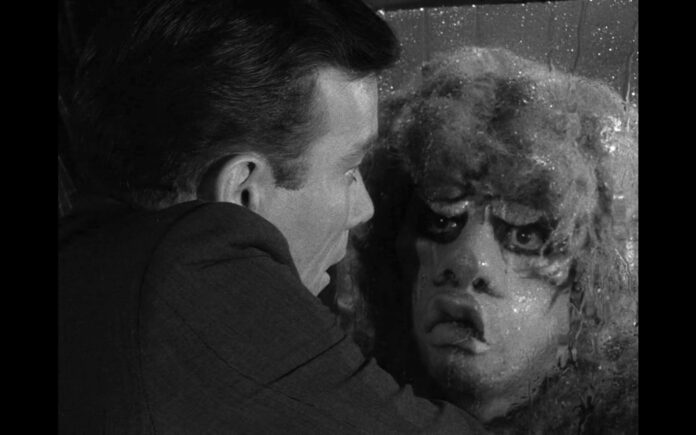After nearly 60 years, Richard Matheson’s short story “Nightmare at 20,000 Feet” still packs the same ice-cold punch to the gut that it did back when it was first published and continues to reign as one of the finest horror tales ever conceived. It’s an expertly-crafted and seminal work and has been adapted for the screen twice and was most recently paid homage in an episode of Jordan Peele’s reboot of The Twilight Zone. The plot is probably familiar to most people: businessman Robert Wilson’s flight home quickly turns into a sweat-soaked, pitch-black carnival ride through his own sanity after he sees a mysterious creature on the wing of the airplane. We are planted next to Wilson moments before take-off, perhaps the most exciting and nerve-wracking moment of any flight. With no time to get acquainted with our protagonist, or even find out where we’re going, it’s wheels up and there’s no getting out until the plane touches ground again. Like Wilson, we are trapped, with little to do but lay at the mercy of the events as they unfold. Straying from the source material, this version of Wilson (1963) isn’t travelling for business, but is returning home after a 6-month stay in a mental hospital, where he went after suffering a nervous breakdown. When he begins to see the creature, he tries very hard to maintain his composure and dignity, always very aware that the slightest hint of erratic behavior could land him back in the hospital. In another divergence from the original story, Wilson is travelling with his wife, who serves as a frustratingly staunch non-believer of the goings on, and to continuously remind him of his illness.
Both the 1963 and 1983 versions, however, remove all of that doubt. Matheson’s script instead calls for one final twist, in which it is revealed that the wing is severely damaged, proving to the audience and the other characters that Wilson/Valentine had been right all along and that he actually saved the plane. This daring addition turns the story in a completely different and far more interesting direction and presents a terrifying truth—that the monster was real.
It is a landmark in the history of horror fiction, melding mental illness, paranoia and the primal instinct for survival into a dizzying narrative that has been told and re-told for decades and will continue to inspire horror on the page and on the screen for decades to come.
Reflexive Analysis
The story of Matheson’s Nightmare at 20,000 Feet is interesting to me as it plays on another emotion and conception we have of flight. That it can be foreboding, tense, or paranoid. Where other examples of art I’ve selected use flight as a metaphor for freedom, expression, or control over ones destiny, Nightmare does the opposite. The plane becomes Wilson’s prison. In the 1963 version his wife and the pressure of avoiding an institution keeps Wilson from expressing himself. Compare this to Lenny Kravitz’s Fly Away or to the story of Lawn Chair Larry. These passion projects show the freedom flight in a romantic light saying, “imagine the beautiful things we can see from all the way up here!” While Matheson dares to asks the opposite.
I’ve also considered that it is the fear of freedom itself that the story is dealing with. Perhaps Wilson is institutionalized, and the gremlin story sending him back to hospital is his own unwitting self sabotage. While he is flying he is out of the institution, yet he is not safe because of something that exists in his mind. This version works under an assumption that original ambiguous ending implies that Wilson imagined the gremlin.
However if the ambiguous ending is interpreted as in later versions, where there was beast of some kind on the plane, then the world is big dangerous place full of things beyond our comprehension. Maybe we’d be safer under control, inside a metaphorical institution. Of course, such reading in which Matheson is saying “freedom bad, control good” is a stretch. I just found it to be an interesting thought as fear of freedom/freedom as a dangerous concept are things I’ve thought about.
Sources
Gauthier, J. (2019, April 10). Flight and fright: Richard Matheson’s “nightmare at 20,000 feet” and its many adaptations. Bloody Disgusting! https://bloody-disgusting.com/editorials/3555152/flight-fright-richard-mathesons-nightmare-20000-feet-many-adaptations/




